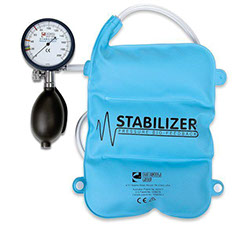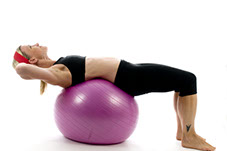Core Function
Core function is easily measurable.
Evidence-based core strength rehabilitation utilizing biofeedback and measurements of flexibility, strength, and balance is an education in understanding how your body works most efficiently for long term physical health.
This approach is best applied to the upper and lower core areas of the cervical and lumbar spine in order to help correct your posture with respect to chronic muscle imbalances in the spine.

Low back strengthening with instability for back core strength
Coordination is a qualitative measurement that can be effectively assessed with a pressure biofeedback device.
Spinal stability biofeedback facilitates activation & co-contraction of spinal stabilizing muscles while maintaining stability of associated anchor points under increasing load.
Learn to perform the core brace, the foundation central to a healthy posture.
Discover which are the best exercises to develop the deep core muscles.
Understand how the motions of the spine and extremities of the hip and shoulder girdle should oppose one another.

Stabilizer biofeedback device

abdominal strengthening with instability for front core strength
Quantitative measurements including flexibility, strength, and balance are assessed by degrees of range of motion, time of endurance, and units of force.
Measuring strength and flexibility from front to back and right and left, in the neck and low back, and comparison with normal values & strength ratios can find hidden postural imbalance.
Minimal flexibility is a necessity, excess flexibility can be a problem.
Ratios of strength can be more important than maximum strength for symptom control. Learn what the normal ratios are for the neck and low back areas as well as the hips and shoulders.

Side Bridge: for lateral core strength
ChiroWerks LLC 5930 Hamilton Boulevard Suite 104 Allentown, PA 18106 610-965-1414
Designed by Zachary Kocis